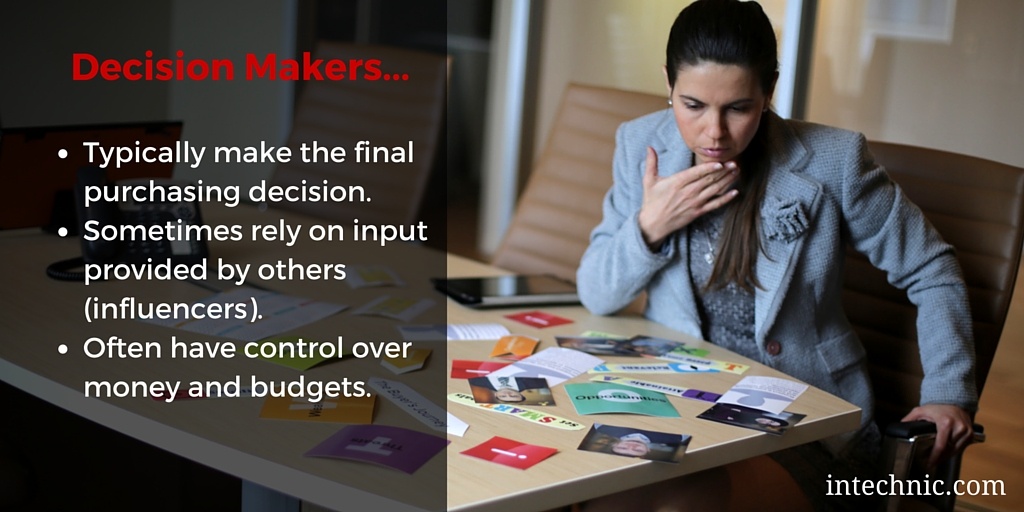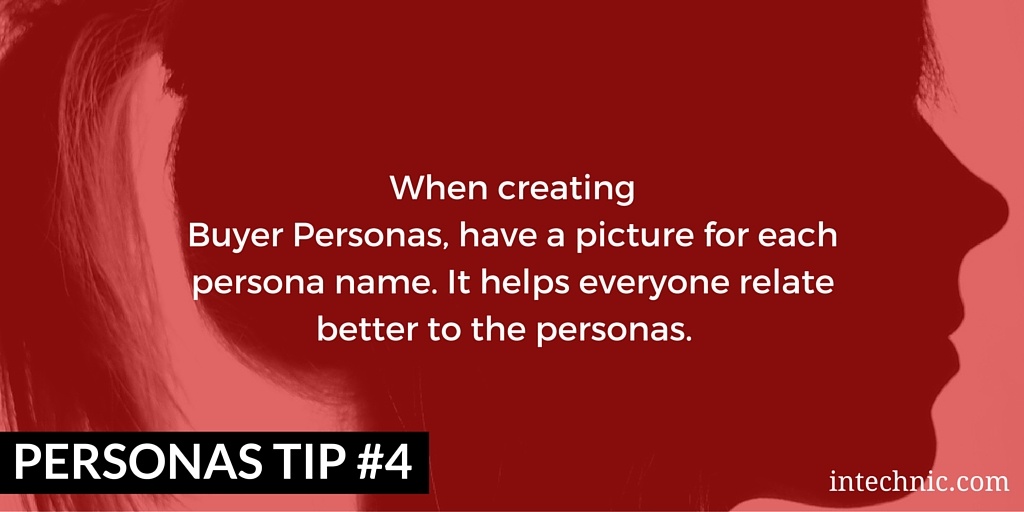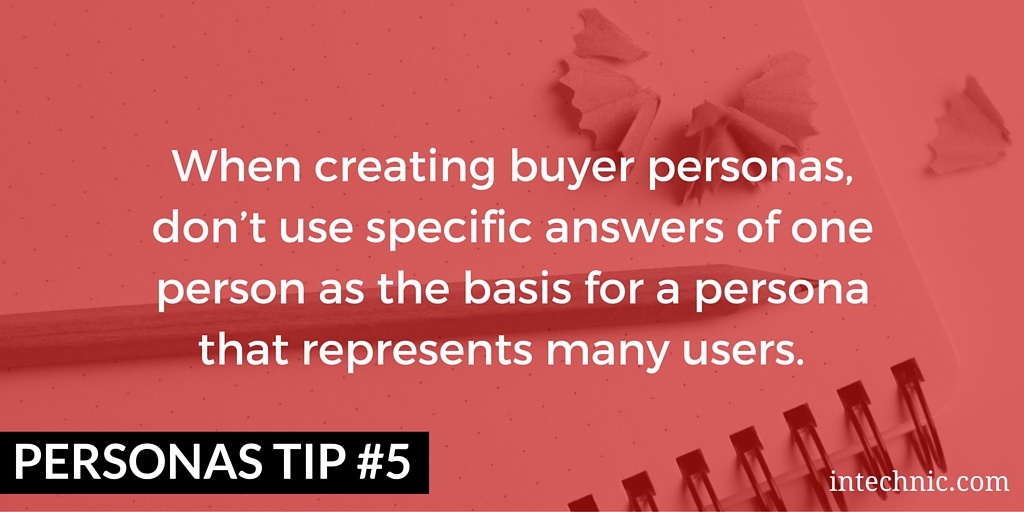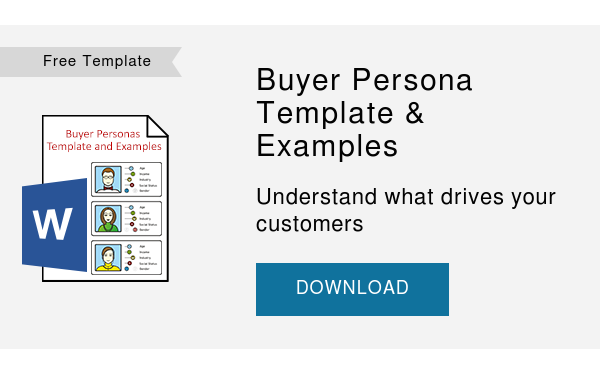How to Create User Personas for Your Website: The Ultimate Guide
 Continued from: What Are Buyer Personas and Why They Are Important to Your Website It’s every marketer’s worst nightmare. You redesign the website, it looks great and everyone loves it—yet six months later you realize it’s not performing any better than the old website. So, what happened? One of the costliest, yet most common mistakes is designing a website that is based on what company management thinks their customers want vs. what they actually want. Your management team will be pleased, but the consequences of designing a website just to please your boss are dire and sure to result in a poor performing website. Remember, you should design your website for your customers and not for yourself or for your boss.
Continued from: What Are Buyer Personas and Why They Are Important to Your Website It’s every marketer’s worst nightmare. You redesign the website, it looks great and everyone loves it—yet six months later you realize it’s not performing any better than the old website. So, what happened? One of the costliest, yet most common mistakes is designing a website that is based on what company management thinks their customers want vs. what they actually want. Your management team will be pleased, but the consequences of designing a website just to please your boss are dire and sure to result in a poor performing website. Remember, you should design your website for your customers and not for yourself or for your boss.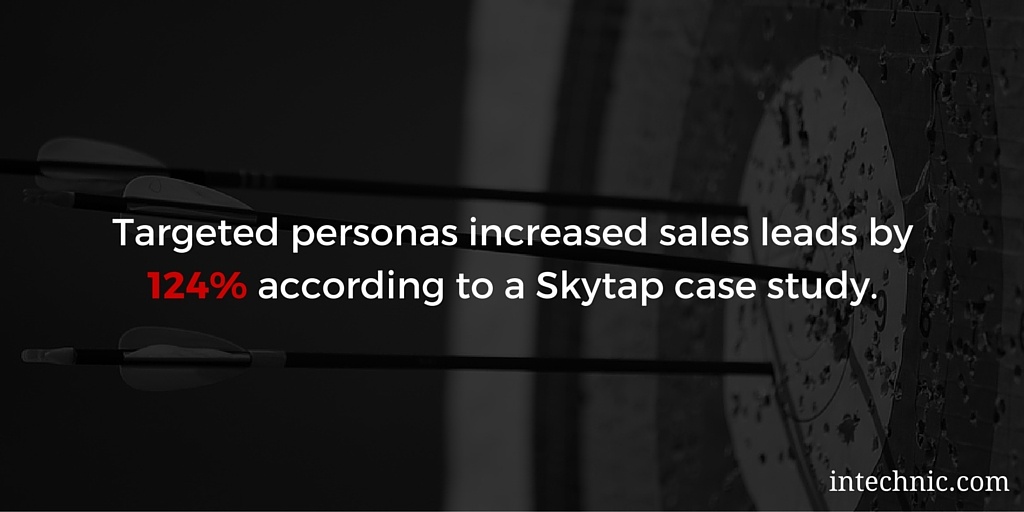
What Are Buyer Personas?
Buyer personas are fictional character representations of your best customers. They share all of the distinct characteristics of your best customers, including demographics, psychographics, pain points, needs, capabilities, wants and irritants. Personas should be used throughout the redesign of the website and in all of your marketing. Think of buyer personas as prescription glasses for your marketing. They improve your vision and let you see things clearly. 
Why Are Buyer Personas Important?
Using buyer personas is a great way to make objective decisions that lead to designing a user-centric website. They ensure that your message resonates with your customers, speaks to them in their language, empathizes with their pain points, helps them find solutions and guides them throughout their customer journey. If you do not have buyer personas that have been defined, documented, distributed among your team and discussed, every team member will be making important decisions based on their assumptions about your customers. Marketing and sales will not be aligned in their strategy and execution and as a result, they will be shooting in the dark, casting a wide net and hoping that something sticks.  If you are still not convinced you need personas, read all about the benefits of creating buyer personas.
If you are still not convinced you need personas, read all about the benefits of creating buyer personas.
Why Must Personas Be Documented?
If your buyer personas are not written down, they do not exist. Don’t assume everyone in your organization truly understands your customers or is capable of accurately retaining this information. Developing, documenting and distributing personas throughout your entire organization ensures everyone is on the same page and all aspects of your marketing are executed with the same strategy. Creating buyer personas also reveals any gaps you may have missed in your strategy. Documenting personas is a rewarding exercise that shows your team how your customers think, how they act and ultimately how they make purchasing decisions. Your team is likely to learn many new things about your customers and apply this new information on a daily basis. Here at Intechnic, we keep buyer personas handy throughout each project and use them as points of reference all the time. 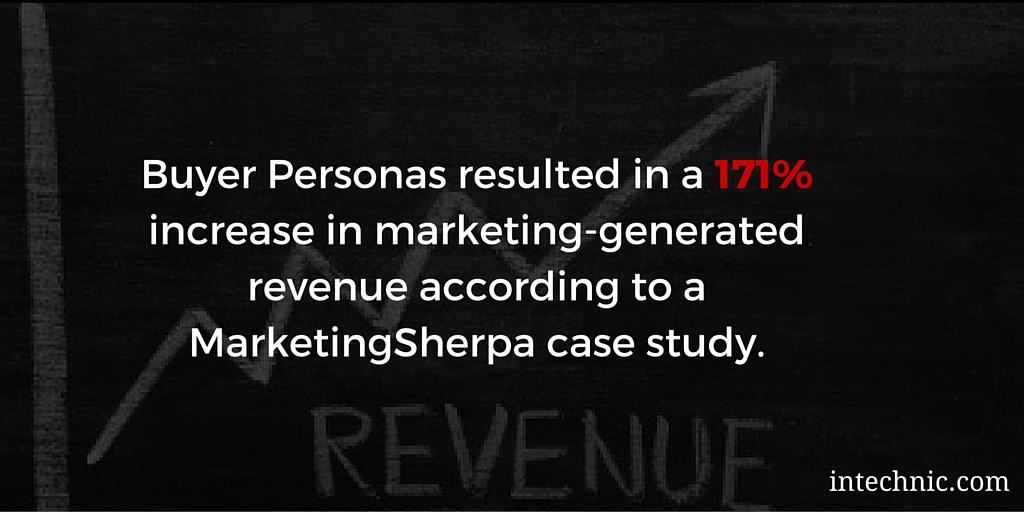
Who Should You Create Personas For?
Your buyer personas should not be a laundry list of every customer you’ve ever had. Personas should be the generalized representations of your best customers. They represent trends and common behavior patterns among the customers you want the most. In order to create buyer personas that are both accurate and useful, you must first do some homework:
1) Identify Your High Value Customers
At Intechnic, we call our best customers HVCs, or High Value Customers. These are the most profitable, most loyal customers with a small attrition rate, low acquisition cost and a very high lifetime value. These are the customers you want to attract. 
2) Understand the Distinct Buyer Roles
Personas help you understand how buyers make purchasing decisions and what affects these decisions. When creating personas, it is also important to understand their role in the buying process: are they a decision maker - someone who has the power to make the final decision? Or are they an influencer – an adviser to someone else who will be making the decision? It's important to account for these roles when interviewing customers (so you can ask the right questions) as well as capture and record this information when creating personas. The following are the main roles you want to keep in mind:
Decision Makers
- These personas typically make the final purchasing decision.
- They sometimes rely on feedback / input provided by others (influencers).
- They often have control over money and budgets.
- Securing their confidence is a must.
- You need to know how the decision maker makes his/her decision by understanding their decision process and their selection criteria. This is how you will learn how to get the decision maker to make the decision in your favor.
Influencers
- These personas typically don't have the power of making decisions.
- Their feedback is often taken into consideration by the decision maker. Influencers are like advisers to decision-makers.
- They could be a powerful ally or an even more powerful adversary.
- Winning the influencer’s vote will get you closer to winning the decision-maker’s vote.
Other Types of Personas (As Needed)
The following are less common personas that can help you define other user roles:
Prospective Employees
- Will your website also be a recruiting tool designed to attract prospective employees?
- If so, you should seek to understand them the same way you seek to understand your customers:
1. Who are your prospective employees?
2. What are they looking for?
3. What is important to them?
- You can then use this information to create an effective ‘Careers’ page and market incentives/benefits to join your company.
Competitors
- If you do a lot of content marketing, competitors could distribute your content if it is useful to them. In a way, your competitors become your allies in content distribution. So, ask yourself the following questions:
1. Who are your competitors?
2. What are they looking for?
3. What's important to them?
- This information can be used to produce content that your competitors will find useful and will be willing to distribute on social media, trade publications and among their peers.
How to Collect Customer Information
Before creating personas, you should collect information about your High Value Customers as it pertains to their Buyer Roles. It is imperative that the information you collect is accurate and comes from a reliable source (your customers). This step is vital. If your information is not accurate, your resulting personas are not going to be accurate. The best way to collect information needed for your personas is through market research and customer interviews:
1) Conduct Online Research
Market research might sound intimidating but it doesn't have to be. There are many methods of doing it: online intelligence, customer surveys, focus groups, and third party interviews. One type of research that should be done prior to interviews is gathering as much information as you can about the customers you are going to interview as possible. This will help you cut down the time of the interview and will remove the need to ask awkward questions like gender, income, age, etc. 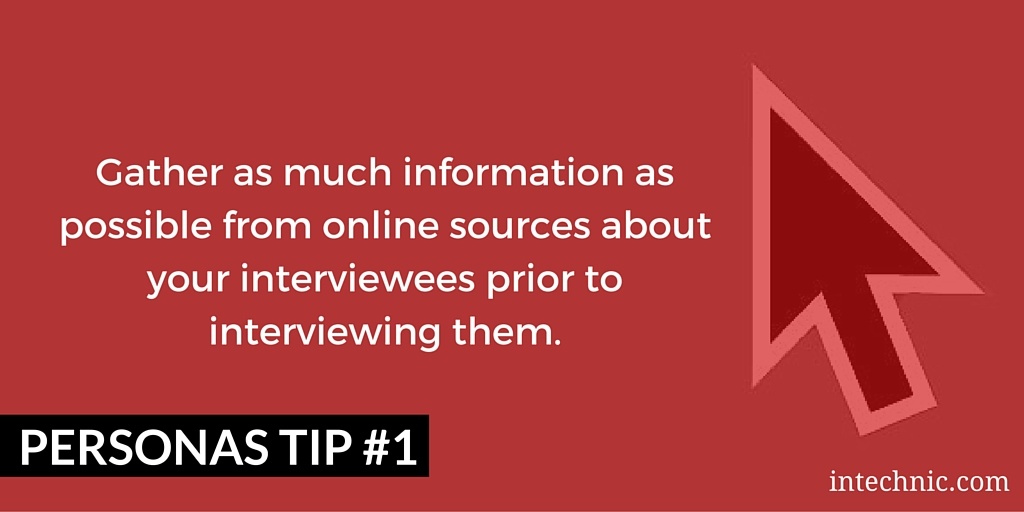
1a) Look up Demographic Information
You can determine (or estimate) most of the customer's demographic information by doing online research on websites like LinkedIn.com. Most of the time LinkedIn.com can help you find out demographic information such as age range, gender, employment status, position title, responsibilities within that position, education level and the customer’s location. You can also get information such as income range from a website like Glassdoor.com by searching the persona’s position title and location.
1b) Interview Coworkers
In order to get better insight into your customers, consider interviewing third parties within your organizations who interact with your customers: sales, account executives, customer support, etc. Those people will know a great deal about your customers: their pain points, personalities, goals, challenges and how they go about solving them. It is a great way to validate your customer interview findings as well as to get another perspective. 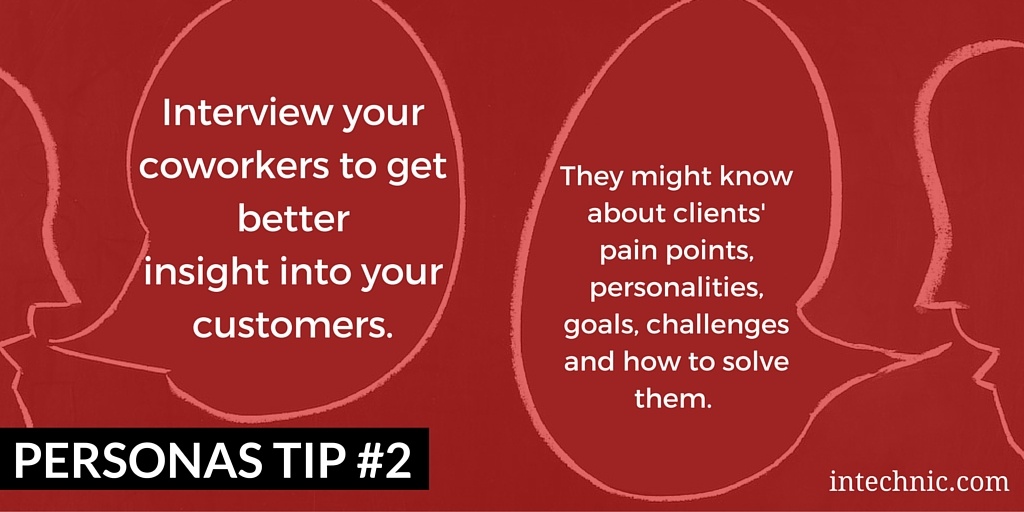
2) Interview Your Customers
Interviewing your customers is the best way to collect accurate information for creating buyer personas. There is no more reliable method of doing that than going to the source-- your customers. Please read our article on customer interviews for the logistics of how to conduct the interviews, which questions to ask and how to capture and process the information collected. 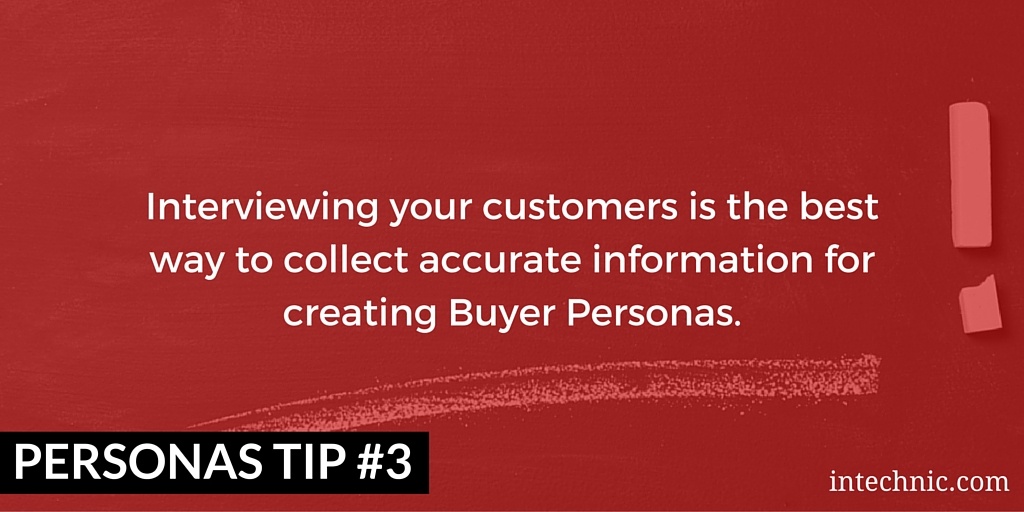
How to Create Buyer Personas
Now that you have gathered your information from your research & interviews, you can proceed with creating the buyer personas by following the steps below:
1. Download the Buyer Personas Template
To help you create personas, we have included a template that we use here at Intechnic. This template gives you all the information you need to collect from interviews and market research as well as includes a few helpful B2B and B2C examples.
2. Extrapolate Information from Interview Findings to Create Buyer Personas
As you were interviewing your customers and conducting market research, you should have filled out the Customer Interview Questions Template. Going from an interview findings worksheet to finalizing user personas requires recognizing and extrapolating important information that is common in your findings. Each question should have been asked to 3-5 different interviewees. Read over the answers within each column in the interview findings worksheet and define commonalities within each answer. Write up the commonalities you’ve found in the labels provided in the empty examples within the personas template. You are now creating a user persona.
Do's
- Do include all trends or patterns that help you understand the steps in the customers journey:
- Pain Points – what were some of the common problems? How did customers become aware?
- Research - how did customers go about researching and evaluating solutions?
- Decision making – how did they go about making their decisions?
- Do have a name and picture for each persona. It will help everyone relate to them.
- Do find commonalities, patterns or similarities from your findings and use those to group answers in silos.
- Do create a separate persona for each buyer role and customer group that have different needs and different ways of going through the decision making process.
- Do mention other influencers or other decision makers if they were involved. Make sure to create personas for them.
- Do beware of outliers. These could be exceptions that may not apply to the rest of the group and might render your personas inaccurate.
- Do reference other personas (influencers or decision makers) by their name and role.
- Do use clear and unambiguous language. Avoid making any ambiguities.
Don’ts
- Don’t pull things out of thin air that are not grounded in fact! You want to include only factual information you actually collected.
- Don’t include contradictory information. Analyze it to see if it is an exception or warrants creating a separate persona.
- Don’t use the specific answers of one person as the basis for a persona that represents many users.
- Don’t copy and paste! You should be interpreting the responses and inferring the ideas behind them.
- Don’t include unessential information (emotion-based answers, details that are irrelevant, etc.)
3. Map Findings with Persona Fields
The following table will help you map your findings with persona fields in our buyer persona template.
| Field Label | What It Is | Where to Get This Information |
|
1) Position |
This is the person’s job title. |
Online research |
|
2) Location |
This is where the person lives. |
Online research |
|
3) Age |
You don’t necessarily have to know the person’s exact age. An age range works as well. |
Online research or third-party interview |
|
4) Income |
How much do they make (salary range)? |
Online research |
|
5) Education |
Highest degree obtained |
Online research |
|
6) Personality & Traits |
This is a description of someone’s character, nature, behavior or temperament that may affect how they make buying decisions (impulsive, spontaneous, careful, meticulous, etc.) |
Third party and customer interviews |
|
7) Goals |
This is the need or the target of the user: what problem are they trying to solve? |
Customer interviews |
|
8) Pain Point |
This is the reason the user is seeking a solution. It is their problem or need. |
Customer interviews |
|
9) Realization |
This is when and how the user realizes or understands that they have a problem that needs fixing: what triggers it? |
Customer interviews |
|
10) Selection Criteria |
This is a list of prioritized criteria the customer is going to use to select a solution; i.e. what is important to them? |
Customer interviews |
|
11) Research |
This is the process the customer uses to look for a solution. It is a step by step replay of how the user went about finding a solution to their problem. If researching online, make sure to include keywords they used to search. |
Customer interviews |
|
12) Findings |
These are the results the user received after going through the research process; what did they find? How did they find it? Were the findings helpful? |
Customer interviews |
|
13) Research Frustrations |
These are the hiccups or obstacles the user ran into when researching the solution. It could be a lack of or surplus of information, disorganized or unclear information, etc. You want to look for opportunities where this process could be improved. |
Customer interviews |
|
14) Influencers |
This is where you mention if there is another person influencing the purchase decision of the decision maker: Who are they? How did they influence? |
Third-Party and customer interviews |
|
15) Decision Process |
This is where you break down the thought process behind the choice made. Why did the decision maker go with a specific solution? How did they arrive at that decision? |
Customer interviews |
|
16) Outcome |
What happened as a result of the solution? Was the customer ultimately happy with their choice? Why or why not? Would they recommend it to others? If so, which keywords would they use? |
Customer interviews |
4. Validate & Test personas
After you have accurately gathered all relevant information you needed for all your personas, you should now validate them. It would be a mistake to proceed with incorporating personas into your processes without having someone who actually works with the customers review the personas you created. The last thing you need is for you to think you accurately described your personas, when in reality, you’re off or missed something important. 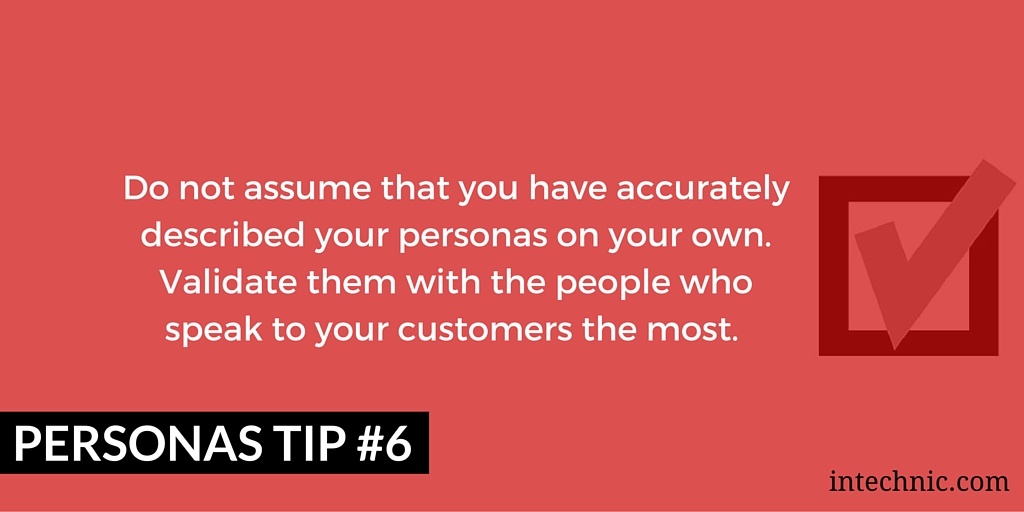 In order to validate your personas, give them to the people who speak to your clients the most (sales, account executives, customer support, etc.) Ask them questions such as:
In order to validate your personas, give them to the people who speak to your clients the most (sales, account executives, customer support, etc.) Ask them questions such as:
1. Did we cover everything? Is there anything missing?
2. Is there anything that doesn’t seem right?
3. Are there any persona types of buyer roles we are missing?
If mistakes are found, you need to revisit all personas and ensure you correctly defined them all. Remember that new information is found out along the way and personas are ever-evolving in a process of refinement. It is all right if something arises that was not known before. This is a discovery process, after all.
Pro Tip: Update Buyer Personas at Least Once a Year
If you haven’t updated your user personas in the past year, you should. Customers, markets and competitors evolve, as do marketing strategies. Naturally, personas will too. Having outdated personas means your strategy could be outdated. Some personas are very detailed, while others are more macro snapshots of users. Utilizing the interview findings worksheet and personas templates will aid you in producing your user personas in a much simpler and more streamlined way. After you create your personas, the next step is to develop a customer journey to better understand how your prospects go through the decision making process.



